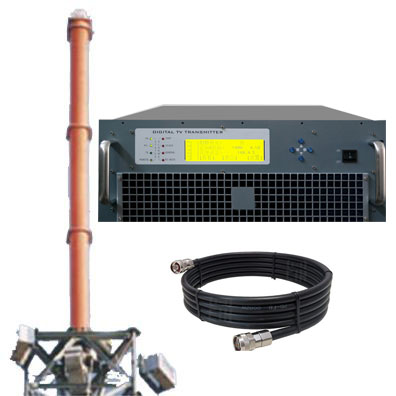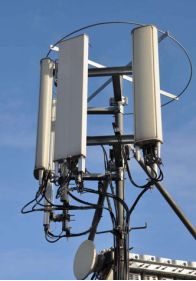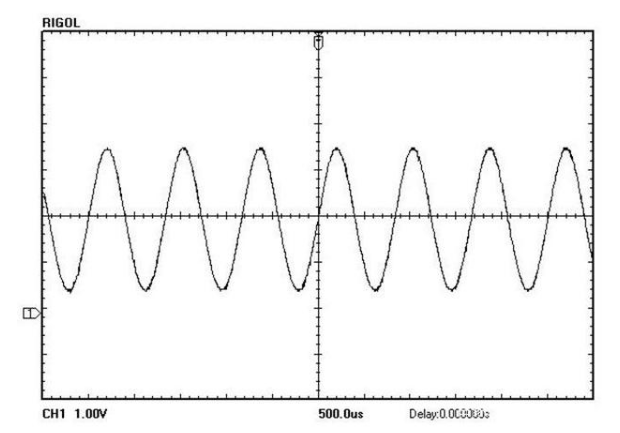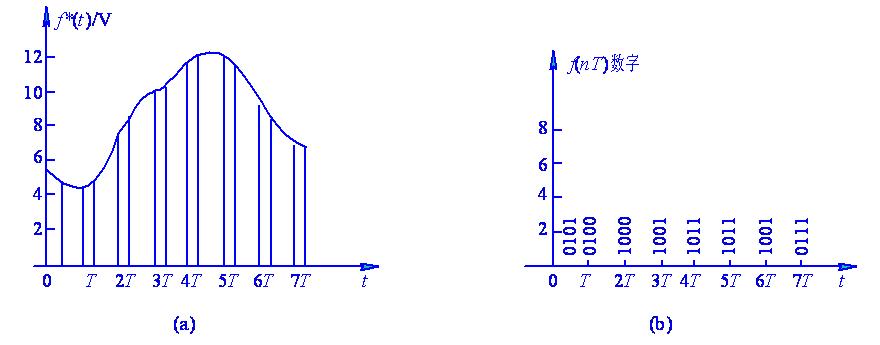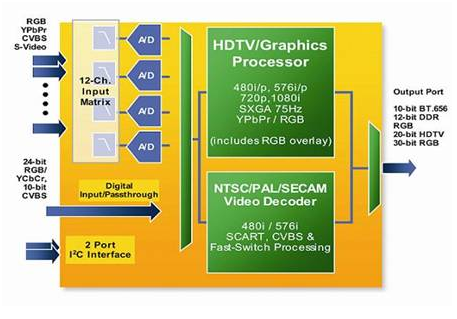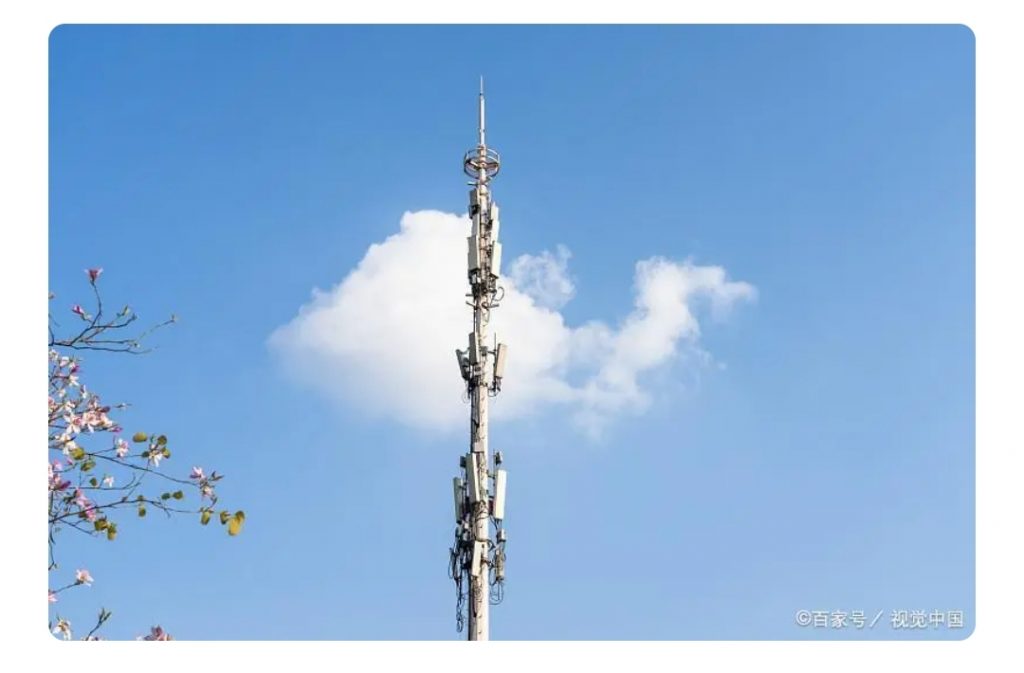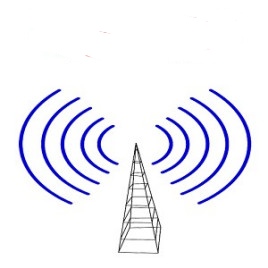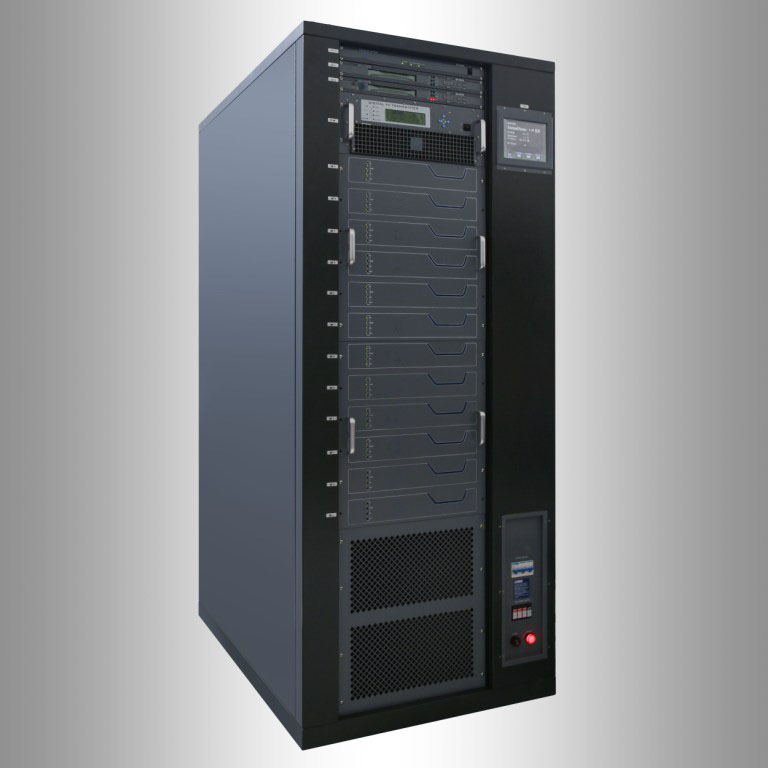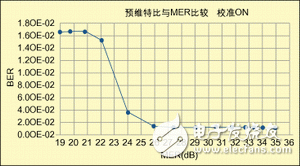Analysis of wireless terrestrial digital TV transmission standard
Digital television (or DTV) is a new type of television system that uses digital signals to broadcast images and sounds. It uses digital signal processing in the entire process from program editing, compression, transmission to receiving TV programs. For example, according to the signal transmission mode, it can be divided into three categories: terrestrial (wireless) digital TV, satellite digital TV and cable digital TV, so the digital TV transmission standard also includes three standards: terrestrial transmission standard, satellite transmission standard and cable transmission standard. Digital TV cable transmission standards and satellite transmission standards have been determined to adopt the European standards DVB-C and DVB-S, only ground
In the context of advocating technological innovation, the country insists on adopting its own domestic standards with independent intellectual property rights, and its significance is particularly important.
Divided by function, the terrestrial digital TV transmission system consists of three major parts, including the source part, the channel part and the sink part.
Among them, the source coding part includes the source (audio/video) encoder and multiplexer. Source coding compresses and codes video/audio signals,
Under the premise of a certain compression rate, the highest decoding image quality is obtained, and the algorithm of the source part is mainly in accordance with the MPEG-2 standard (or MPEG-4 standard) (multi-channel audio codec can also be realized in accordance with the Dolby AC-3 algorithm ), the performance of the video encoder has a decisive influence on the image performance of the entire DTV system, and the multiplexer can ensure the flexibility and scalability of the system business, and can complete the combination and adjustment of various digital streams and provide wireless communication with the ground Adaptive interface for the transport network.
The task of the terrestrial wireless channel transmission part is to ensure the correct transmission of the maximum capacity data stream under the premise of a given transmission bandwidth and considering various interferences in the transmission channel. platform, regardless of the content of the data transferred. it includes
Channel coding and modulation, transmitter, antenna, etc.; while digital TV terrestrial transmission standards are mainly reflected in channel coding and modulation methods, that is, the coding and modulation methods of digital signals determine the main performance of the channel transmission part, using different Coding and modulation methods constitute the differences in digital TV terrestrial transmission standards in various countries. Also due to the poor conditions of the terrestrial broadcast channel, various interference and clutter increase the error rate caused by the signal and reduce the service quality. In order to more effectively overcome the harsh environment and support mobile reception at the same time, the terrestrial broadcast channel adopts The technology and transmission standards are much more complex than other cable and satellite transmissions.
The sink part refers to the receiving part of the terrestrial digital TV signal, including the receiving antenna and the receiver (terrestrial digital TV receiver top box) that completes channel demodulation and decoding, or the digital TV integrated machine with built-in terrestrial digital TV receiver top box.
There are three reception methods for terrestrial digital TV broadcasting: one is wireless mobile reception, mainly in urban buses, taxis, subways and other transportation means
The second is fixed reception on the ground, which mainly helps to solve the problem of watching TV in areas where wired and optical cables cannot be covered, especially the problem of wireless coverage in suburban and rural areas; the third is the reception of multimedia information on handheld devices, and two-way on-demand can also be carried out in the future business. my country’s digital TV terrestrial transmission standards are mainly applicable to the first two receiving methods, and mobile multimedia broadcasting standards will be specially formulated for handheld reception.
According to the data, since 2002, my country’s terrestrial mobile TV has been launched. So far, nearly 40 cities have built terrestrial mobile TV.
Active digital television broadcasting system. These cities mainly adopt the European DVB-T standard, Tsinghua DMB-T and Shanghai Jiaotong University ADTB-T technical solutions. Opened
From the very beginning, the competent authorities of these cities signed an important agreement with the system provider, that is, if the standard cannot become a national standard, the system provider
Suppliers must replace equipment free of charge so that the equipment they provide can be converted and meet national standards. This has led to previous system providers promoting ground mobile
When using digital TV, you must be cautious and not dare to enter in a large scale. Some senior people in the industry said that after the standard is determined, it is expected that in 2006 the whole country will soon be
There will be 60 cities covered by terrestrial digital TV signals.
After as long as 5 years, the National Standardization Committee issued the “2006 No. 8 (Total No. 95) China National Standard Approval Announcement” on August 30.
The standard number of GB 20600-2006 “Digital TV Terrestrial Broadcasting Transmission System Frame Structure, Channel Coding and Modulation” officially announced in the
Transmission of national standards. Its approval time is August 18, and it will be officially implemented on August 1, 2007. The standard is a digital television special organization organized by the state
The special working group is responsible for drafting, and it is under the jurisdiction of the National Radio and Television Standardization Technical Committee and tested. The State Administration of Quality Supervision, Inspection and Quarantine, and the National Standardization Administration
Management Board approves release. “Digital TV Terrestrial Broadcasting Transmission System Frame Structure, Channel Coding and Modulation Technical Requirements” has been published since April this year.
Industry experts have been consulted. This standard has achieved key technological innovations and formed a number of patented technologies with independent intellectual property rights.
It has achieved the integration of single and multi-carrier modulation technologies, and supports multiple industries such as high-definition TV, standard-definition TV, and multimedia data broadcasting at the same time.
It also supports more downloading and uploading data, which can meet the needs of large-scale fixed coverage and mobile reception, especially suitable for large-scale, unconnected
The village of cable TV is a new and important achievement of our country’s independent innovation and independent intellectual property rights. The performance of the system based on this standard is good,
High spectrum utilization rate, strong scalability, suitable for different application needs in urban and rural areas of our country, has extremely far-reaching significance for the promotion of terrestrial digital TV and digital TV in our country, and will definitely promote and accelerate the process of industrialization of digital TV in our country.
The level of this standard is determined as a national mandatory standard, not an industry standard or recommended standard. There is also a one-year transition period after the standard is published
During the period, it will be enforced throughout the country one year later, and those non-national standard wireless transmission and receiving equipment will be removed from the market, and the corresponding production,
Manufacturing existing non-national standard systems must all be converted to the national standard system. Because this standard is the DMB-T multi-carrier standard previously developed by Tsinghua University
It is a set of integrated standards after merging and perfecting the ADTB-T single carrier standard of Shanghai Jiaotong University.
Most of the formats, such as information and frame structure, are exactly the same, but in the parameters of the modulation scheme, there are two parameters that are mutually optional, and will be based on the frame body data
The value of the processed parameter C is used to determine whether to use a single-carrier scheme or a multi-carrier scheme (according to different parameter combinations, a total of 330 working modes can be formed
formula), that is, single carrier C=1 and multi-carrier C=3780, single carrier is suitable for long-distance, wireless fixed reception in rural area coverage, and multi-carrier is suitable for
According to the characteristics of their own business, the radio and television operation departments in various places can choose any one of them independently.
The single-carrier system and the multi-carrier system should be implemented in one chip at the same time, and then the user can choose which system to use through software control; while the European DVB-T terrestrial digital TV system used in various places will be gradually released after the release of the standard. Withdraw from the Chinese market, that is to say, there are dozens of
Carried out mobile TV broadcasting experiments in 10 cities, most of the systems need to be replaced. But it is undeniable that the “fusion” program will give the operating department
Increase a certain cost, which varies according to the network coverage scale, generally 5% (the cost of digital TV all-in-one will increase at least
20~30 dollars)~30% (receiver top box) or so.
This digital TV terrestrial transmission standard is only a channel transmission standard.
The formulation of standards will help my country to truly develop terrestrial wireless digital TV services in the future.
The intellectual property rights of digital TV terrestrial transmission standards are divided into two parts, one is the transmitting end part, and the other is the receiving end part. Currently, Shanghai High
Shanghai Jiaotong University’s ADTB technical solution represented by Qing and Shenzhen Lihe’s Tsinghua DMB-T technical solution have signed authorization agreements with relevant departments.
The intellectual property rights of the transmitting end of the terrestrial transmission standard are transferred to the country free of charge, while the intellectual property rights of the receiving end are owned by each enterprise. Experts involved in the formulation of national terrestrial standards all said that the technical solutions of ADTB-T of Shanghai Jiaotong University and DMB-T of Tsinghua University are based on the original European DVB-T
Standards, American ATSC standards and Japanese ISTB-T standards have been independently innovated and have independent intellectual property rights. Why insist on choosing
National standards with independent intellectual property rights can not only avoid paying patent fees to foreign companies, but also promote the development of domestic manufacturing industries and cultivate
A digital TV equipment provider with independent technology can establish a complete digital TV industry chain.
The national terrestrial digital TV standard must first be a standard with independent intellectual property rights. The wireless terrestrial digital TV broadcasting system standard involves a wide range. The standards of property rights will not use foreign ready-made standards. Although the use of international ready-made relevant standards can save time and money for standard development, it is mainly due to political, economic and other considerations. For example, currently about 134 countries and regions apply the European DVB- T standard, but for countries that adopt European or American standards to make chips, each set of chips may have to pay in the future
The technology patent fee is about 20 US dollars (for example, South Korea has adopted the US ATSC standard, and each set of TV integrated circuit chips designed according to this standard needs to be paid to
The US side pays 30 to 40 US dollars for patent royalties). Everyone knows that whoever owns a patent is equivalent to having the initiative. For example, the United States used to maintain
The national interest once rejected the digital TV technology worth 500 million US dollars “sent” by Japan, and independently developed the technology with its own patent.
Tsinghua’s DMB-T wireless terrestrial digital TV technology solution has independent intellectual property rights, and more than 40 patents have been declared, including 12 national invention patents and 1 US patent, of which 3 are basic invention patents; and Shanghai Jiaotong University’s ADTB-T technical solution also has more than 20 independent intellectual property rights.
my country’s wireless terrestrial digital TV broadcasting system transmission standard originates internationally. There are two types of signal modulation technologies used in digital TV terrestrial broadcasting: single-frequency carrier and multi-frequency carrier. Single-carrier technology has better fixed reception effect and lower manufacturing cost, and has higher transmission efficiency, but it cannot support mobile reception services before this, such as the ATSC standard in the United States; multi-frequency carrier technology supports lower code It has advantages in high-rate mobile reception services, such as European DVB-T and Japanese ISDB-T standards.
The ADTB-T technical plan was drafted by Shanghai Jiaotong University, which was optimized on the basis of the traditional single-carrier technology American ATSC standard. It ensures high-quality mobility and anti-interference; while the DMB-T technical solution was formulated by Tsinghua University, which is based on the multi-carrier modulation technology of the European DVB-T standard, and multiplexes the synchronization header in the guard interval of OFDM , can improve its receiving sensitivity and signal transmission efficiency, and is beneficial for automobiles to receive wireless digital TV signals in a moving state. Both standards are said to be superior to the European DVB-T standard that has been adopted by various operators before.
Among the two domestic schemes, Tsinghua University is a “half-way” monk. At the invitation of the Science and Technology Department of the Ministry of Information Industry, it developed its own scheme along the European DVB-T standard route, thus joining the ranks of competition; while Shanghai Jiaotong University first started There was the strong support of the former State Planning Commission and later the National Development and Reform Commission. It is undeniable that foreign standards, foreign industrial alliances, and foreign related manufacturers are watching from the sidelines, or wantonly enclosing land, or splitting up, waiting for opportunities, and have never stopped trying to kill China’s relevant standards. In swaddling.
According to the records, since 1994, the National Standardization Committee has determined the strategy for the development of high-definition television standards, and formulated the method
case.
In 1999, the State Council decided to lead by the former State Planning Commission (now the National Development and Reform Commission), the State Economic and Trade Commission, the Ministry of Science and Technology, the Ministry of Information Industry, the State Council
The National Bureau of Quality and Technical Supervision (under the jurisdiction of the National Standardization Committee) and the State Administration of Radio, Film and Television jointly participated and organized a national digital TV leadership
The group (still located in the National Development and Reform Commission) will lead the completion of the formulation of my country’s wireless terrestrial digital TV broadcasting system standards.
Subsequently, before April 30, 2001, five ground transmission schemes from four standard research institutes were collected:
Proposal No. 1 of the National HDTV Technical Executive Experts Group (The HDTV Technical Executive Experts Group), mainly composed of Shanghai Jiaotong University:
Advanced Digital Television Broadcasting System ADTB-T (Advanced Digital Television Broadcasting System – Terrestrial),
It is a single-carrier system with a mixed transmission mode, which is developed from the American ATSC standard.
National HDTV Overall Group (The HDTV Technical Executive Experts Group) Proposal No. 2:
Terrestrial digital television broadcasting system (BDB-T/OFDM), based on multi-carrier modulation technology.
Technical solutions of the Academy of Broadcasting Science, State Administration of Radio, Film and TV:
Radio frequency sub-band split dual-carrier hybrid modulation system (CDTB-T), developed from the European DVB-T standard.
The technical solution proposed by the State Key Laboratory of Microwave and Digital Communication of Tsinghua University: based on the terrestrial digital multimedia television broadcast transmission protocol DMB-T (Terrestrial Digital Multimedia/Television
Broadcasting), using the time domain synchronous orthogonal frequency division multiplexing modulation technology TDS-OFDM (Time Domain Synchronous-Orthogonal Frequency Division Multiplexing), developed from the European DVB-T standard.
Technology programs at Chengdu Electronic Technology University:
Synchronous multi-carrier spread spectrum terrestrial digital television transmission system (SMCC/COFDM).
In 2005, under the leadership of the National Development and Reform Commission and the Digital TV Special Leading Group, the Chinese Academy of Engineering organized relevant domestic research units and decided
Synthesize the research results of Tsinghua University’s DMB-T and Shanghai Jiaotong University’s ADTB-T technology, and integrate the strengths of other programs (such as those of the Guangxi Academy of Sciences) to form China
The national standard fusion solution of the characteristic terrestrial digital TV broadcasting, that is, the “911 plan”. Its 911 plan mainly includes the following contents:
The Convergence Program will incorporate the respective features of the three existing programmes;
The fusion scheme will include time-domain data patterns, as well as frequency-domain data patterns;
After the computer simulation and hardware design of the fusion solution are basically completed, the actual broadcast environment will be carried out in Beijing, Shanghai, Guangdong and other cities
test;
By the end of 2004 or within 2005, the technical standard framework of the basic integration scheme will be formed.
At that time, some people in the industry believed that the “911 plan” was the result of balancing the interests of these parties. Actually before December 31, 2004,
The parties involved initially determined the draft of the integration plan. Because Shanghai Jiaotong University’s single carrier and Tsinghua University’s multi-carrier are taking two different technical routes
However, they cannot be shared, and the draft of the final integration plan is to use a similar “switch” to connect them in parallel to realize the commonality of the two.
The episode during this period is that, in view of the technical and temporal infeasibility of the fusion scheme, a member of the Department of Information and Electronic Engineering of the Chinese Academy of Engineering
A group of academicians are preparing to jointly sign a letter, suggesting that they abandon the integration plan of Tsinghua University’s DMB-T program and Jiaotong University’s ADTB-T program. However, the relevant departments have firmly taken the “financial
together” way.
Regardless of which wireless terrestrial digital TV standard China adopts (Tsinghua DMB-T or Shanghai Jiaotong University ADTB-T technical solution, or a combination of the two), when changing from the European DVB-T standard to China’s own standard, you only need to transmit It is enough to replace the digital modulator and exciter with a price of more than 200,000 yuan at the front end, and the source coding part before forming the digital transmission TS stream does not need to be replaced, and other transmission technology equipment can continue to be used; the corresponding wireless terrestrial digital TV receiver set-top box, also It needs to replace the internal decoding board (about a few hundred yuan).
But in 2004, more than 20 cities tested, opened or already operated wireless terrestrial digital TV broadcasting systems, and most of them
Adopted the international standard of European DVB-T, such as Beijing, Shanghai, ***, Guangdong Province, Shanxi Province (including Taiyuan City), Nanjing City, Jiangsu Province, Anhui Province
Province, Chongqing City, Hunan Province, Gansu Province (including Lanzhou City), Hangzhou City in Zhejiang Province, and Kunming City in Yunnan Province; while Henan Province, Jiangxi Province, Shandong Province (including Qingdao, Yantai, Jinan and other cities), Liaoning Province Provinces, Jilin Province, Inner Mongolia, Hebei Province, Hainan Province, Hubei Province, Changsha City, Hunan Province, etc. have announced the adoption of Tsinghua DMB-T technology solutions, Yunnan Province, Hong Kong, Macau, Guangxi Province, Jiangsu Province, Sichuan Province, Fujian Province, Shaanxi Province Province, Heilongjiang Province, Guizhou Province and other places expressed their tendency to adopt Tsinghua DMB-T technology solution; in a short period of time from October 2004 to the end of the year, Shanghai launched a wireless terrestrial digital TV broadcasting system using ADTB-T technology solution, and The corresponding vehicle-mounted mobile digital TV receiving terminals were installed on nearly a thousand taxis in Shanghai, realizing commercial operation; in addition, in cooperation with Shanghai Media Group, Shanghai Jiaotong University provided ADTB-T technical solutions, and Shanghai Media Group provided content and carried out Operation, broadcasting terrestrial wireless digital TV in Shanghai commercial building TV “Oriental Focus”, and a large number of radio and television operations in the Yangtze River Delta are also trying out the ADTB-T solution of Jiaotong University; at the same time, Shanghai Jiaotong University is in Hong Kong, Beijing, Shenzhen, Jinan, Yunnan and other places have also carried out many ADTB-T wireless digital TV coverage tests.
The following part will focus on the introduction of these two domestic technical solutions, and make a simple comparison and description of their respective technologies and characteristics.
Comparison of Tsinghua University’s DMB-T technical solution and Shanghai Jiaotong University’s ADTB-T technical solution
